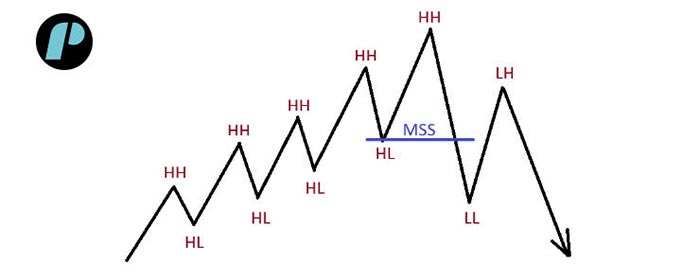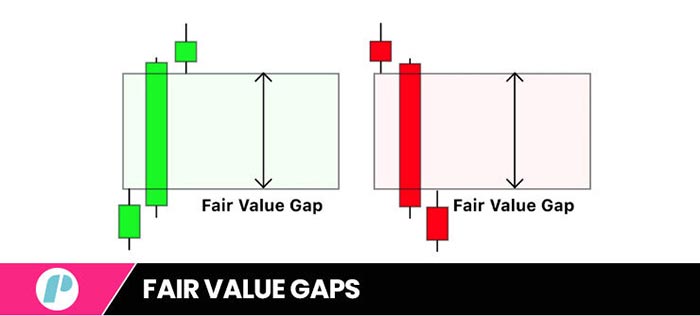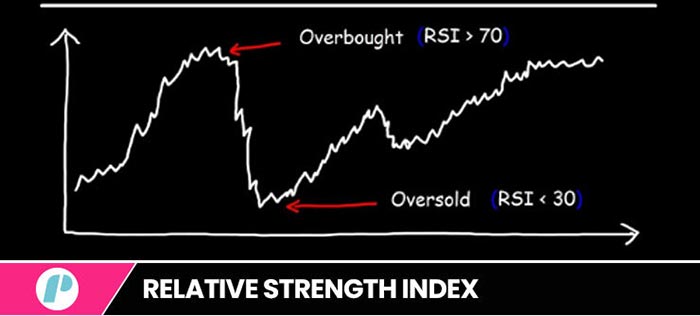
Introduction
In a past article – “The Seven ICT Concepts You Oughta Learn” – we talked about Inner Circle Trading’s (ICT) very own trading strategy and the seven concepts upon which it has been created.
In that same article, we said ICT’s seven concepts were Liquidity, Displacement, Market Structure Shift, Inducement, Fair Value Gap, Optimal Trade Entry, and Balance Price Range. Today, we are going to take a closer look at one of these concepts: the Market Structure Shift. We’ll explain what it is and how it is used within the ICT trading strategy.
What is a “Market Structure Shift”?
Whatever your skill level, as a trader, you are probably already used to watching charts and analyzing the flow of trends and patterns before your eyes and that alone is a great starting point to understand and easily spot Market Structure Shifts (MSS).

MSS are ICT traders’ way to identify an imminent reversal in a stock price and enter the market within the Fair Value Gap that the MSS helps to highlight.
The easiest way to describe the formation of an MSS would be to say that, as the name suggests, an MSS is the point in time (as well as on the charts) where the current trend or pattern suddenly changes.
In practical terms, however, it can be described as the level at which price extends past the last lowest low following a succession of higher highs and higher lows (in a bullish trend) or the last lower high following a succession of lower highs and lower lows (in a bearish trend).
ICT traders see a Market Structure Shift as the first indication of a trend change and, if this is confirmed, will often use this point to identify the right area in the chart to set entry and exit points upon which to base their trade. Once ICT traders have established and recognized the current trend, they need to keep monitoring the chart waiting for a break in the status quo and a Market Structure Shift is how this usually manifests.
Keep in mind that for an MSS to be recognized as such, price must break past a swing high or low with a full-bodied candle (rather than with just its wick); only in this case, the MSS would be considered as signaling a potential change in the price direction. When confronted with any other scenarios (i.e. when it is the candle’s wick, rather than its body, that extends past the previous lower low or higher high), ICT traders would wait for other confirmation knowing that they might be in front of a simple Liquidity Grab rather than an actual Market Structure Shift. Liquidity Grabs, on the other hand, often result in just a brief pullback and do not offer any indication of an imminent reversal. As the name suggests, Liquidity Grabs are quick price movements created by smart money’s attempt to push a stock price to areas where traders’ stop loss levels are likely to be highly concentrated.
All in all, being able to recognize MSS properly makes it easier for traders to spot great trading opportunities, get a better insight into potential trend changes, and set better entry and exit points.
ICT’s Smart Money Concept Strategy includes a variety of tools and methods that can be used to spot and identify genuine MSS and good trade opportunities in the stock market; the three most effective and most popular amongst these are Order Blocks, Fair Value Gaps, and the good old RSI.
Order Blocks
Order Blocks show up as the footprint left behind by large market players in areas where they entered and/or exited the market in significantly large volumes. The importance of these zones derives from the fact that they can often become turning points for price movement direction. The ability to identify these areas gives ICT traders an advantage in being able to set suitable entry and exit points for their trades.
Fair Value Gaps
When clarity is concerned, arguably one of the easiest ways to establish that a genuine Market Structure Shift has taken place is the occurrence of a Fair Value Gap (FVG) or even a Double Fair Value Gap (DFVG).

When looking at a chart, a Fair Value Gap is represented by the space created by a stock price shifting between two points without any trading taking place in between. These gaps will be filled in the future more often than not and can reveal the market’s momentum and provide insight into potential future shifts.
By keeping an eye on where price extends past the last opposite swing point and leaves behind a Fair Value Gap, it becomes possible to try and predict a new trend change.
Relative Strenght Index
Some ICT traders prefer to use technical indicators to identify Market Structure Shifts and, among these, one that stands out for effectiveness and popularity is the Relative Strength Index indicator (RSI). A stock is considered to be overbought when the RSI shows a value equal to or higher than a value of 70 or oversold when it shows a value equal to or inferior then 30. It’s a hint that the market’s current trend may be exhausted. If and when one of these two scenarios coincides with a Market Structure Shift, traders would be faced with a strong indication that price movement may be about to change direction. Usually, traders would take advantage of the situation to place their trades on the right side of the market’s new course.

How to trade a Market Structure Shift
Trading an MSS begins – quite obviously – by identifying and confirming the presence of an MSS itself.
At the end of a bearish trend, the MSS is confirmed when the first higher high closes above the previous lower high (bullish MSS). On the other hand, at the end of a bullish trend, the MSS is confirmed when the first lower low closes below the previous higher low (bearish MSS).
Once the MSS is confirmed, traders will look for entry opportunities within the corresponding Fair Value Gap. They can then use Fibonacci levels to set their stop-loss and take profit levels. Those who prefer to set these levels manually would often place the stop-loss at the lowest level preceding a bullish MSS or at the highest level preceding a bearish MSS and their profit targets close to the highest level of the previous market trend before a bullish MSS or close to the lowest point of the previous market trend before a bearish MSS.
Whichever way they choose to go about it, the simple act of learning to identify Market Structure Shifts would give traders the advantage they need to recognize imminent trend changes, reversals, and good trade opportunities and, of course, the same can be true for you.
As always, I hope this helps you to enrich your skills, improve your technique, and trade more effectively and successfully.
To start trading today join Trade The Pool now!
If you liked this post make sure to share it!






